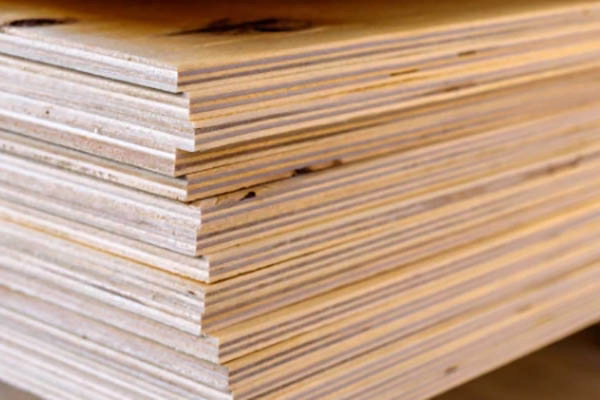Plywood is one of the most versatile and widely used materials in construction, woodworking, and DIY projects. It is valued for its strength, durability, and relative affordability. However, one of the key considerations when working with plywood is its weight, as this can affect transportation, handling, and the structural integrity of the projects in which it is used. So, how much does a plywood sheet weigh? The answer depends on several factors, including the type of wood, thickness, and the manufacturing process.
Understanding Plywood Construction
Plywood is made by gluing together multiple layers of thin wood veneers, also known as plies. These plies are arranged in alternating grain patterns, which enhances the strength and stability of the material. The number of layers and the type of wood used in the veneers play a significant role in determining the weight of the plywood sheet.
Common types of wood used in plywood include hardwoods like oak, birch, and maple, as well as softwoods like pine and fir. Hardwoods generally produce heavier plywood sheets due to their denser structure, while softwoods produce lighter sheets. Additionally, the type of adhesive used in bonding the layers can also influence the overall weight.
Factors Affecting Plywood Weight
**1. Thickness
The thickness of a plywood sheet is one of the most significant factors in determining its weight. Plywood is available in various thicknesses, typically ranging from 1/4 inch (6mm) to 3/4 inch (19mm). As a general rule, the thicker the plywood, the heavier it will be. For example, a 1/4-inch sheet of plywood will weigh significantly less than a 3/4-inch sheet of the same size and material.
**2. Wood Type
As mentioned earlier, the type of wood used in the veneers greatly impacts the weight of the plywood. Hardwoods, such as oak or maple, are denser and therefore heavier than softwoods like pine or fir. A sheet of hardwood plywood will weigh more than a sheet of softwood plywood of the same dimensions and thickness.
**3. Size
The size of the plywood sheet also affects its weight. The most common size for plywood sheets is 4 feet by 8 feet (1.22 meters by 2.44 meters). However, plywood can also be found in other dimensions, such as 2 feet by 4 feet (0.61 meters by 1.22 meters) or 5 feet by 5 feet (1.52 meters by 1.52 meters). Naturally, larger sheets will weigh more than smaller ones of the same thickness and material.
**4. Grade and Density
The grade of plywood, which refers to the quality and appearance of the veneers, can also influence its weight. Higher-grade plywood typically has fewer defects and voids, which can result in a denser and heavier sheet. Additionally, some types of plywood are manufactured with higher-density core materials, further increasing the overall weight.
Typical Plywood Weights
To give a more concrete idea of how much plywood weighs, here are some average weights for a standard 4×8-foot sheet of plywood:
- 1/4-inch Softwood Plywood: Approximately 22 to 25 pounds (10 to 11 kg)
- 1/2-inch Softwood Plywood: Approximately 40 to 45 pounds (18 to 20 kg)
- 3/4-inch Softwood Plywood: Approximately 60 to 70 pounds (27 to 32 kg)
- 1/4-inch Hardwood Plywood: Approximately 25 to 28 pounds (11 to 13 kg)
- 1/2-inch Hardwood Plywood: Approximately 45 to 50 pounds (20 to 23 kg)
- 3/4-inch Hardwood Plywood: Approximately 70 to 80 pounds (32 to 36 kg)
It’s important to note that these weights are averages and can vary slightly depending on the specific type of wood, manufacturing process, and moisture content.
Why Plywood Weight Matters
Understanding the weight of plywood is essential for several reasons. First, it affects how the material is transported and handled. Heavy plywood sheets may require multiple people to lift and move safely, and transporting them may require special equipment or vehicles.
Second, the weight of plywood is a crucial consideration in construction and structural applications. For instance, when building floors, walls, or roofs, the weight of the plywood can impact the load-bearing capacity of the structure. In some cases, lighter plywood may be preferred to reduce the overall weight of the building, while in others, heavier plywood may be chosen for its increased strength and durability.
Finally, the weight of plywood can also influence the choice of fasteners, adhesives, and supports used in a project. Heavier plywood may require stronger fasteners and more robust support structures to ensure the finished product is safe and secure.
Conclusion
The weight of a plywood sheet is determined by a combination of factors, including thickness, wood type, size, and manufacturing process. While there are general guidelines for the average weight of plywood sheets, it’s always important to consider the specific characteristics of the plywood you are using. By understanding these factors, you can make informed decisions about material selection, handling, and application, ensuring your projects are both safe and successful. Whether you’re building a piece of furniture, a house, or a simple DIY project, knowing how much your plywood weighs is a key part of the process.
Post time: 09-04-2024












